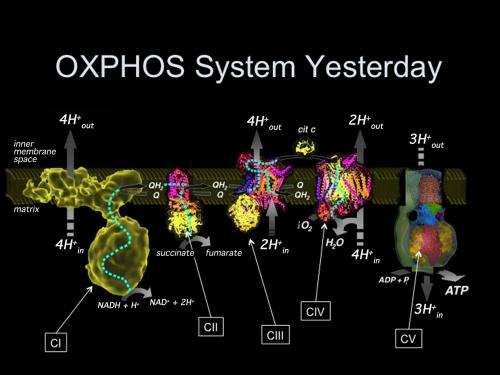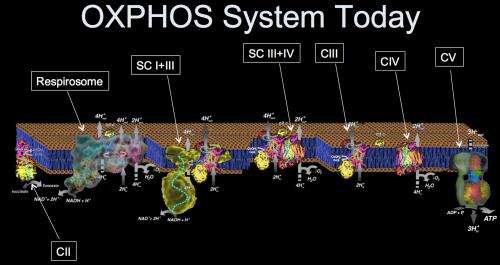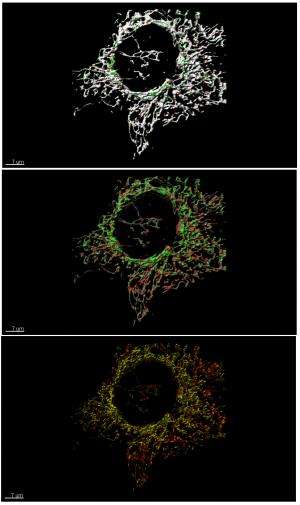Researchers reformulate the model of mitochondrial function

The discovery confirms the model proposed by the team in 2008 to account for observations that could not be explained by the established model of mitochondrial function. Mitochondria are the organelles in the interior of cells that, among other functions, extract energy from nutrients and convert it into a form that can be used by the cell for its vital processes.
The consumption, digestion and assimilation of nutrients serves the ultimate purpose of fueling each and every cell in the body. The breakdown of nutrients in the digestive tract requires energy to release simple compounds from larger components: glucose from sugars and carbohydrates, amino acids from proteins, and fatty acids from fat. These breakdown products can enter cells and be processed in the mitochondria to release much larger quantities of utilizible energy.
According to Dr. Enríquez, lead investigator on the study, "Understanding how cells generate energy is fundamental to understanding living systems, and for much of the last century this was a primary object of studies in biochemistry. By the beginning of the 80s the mystery of how mitochondria achieve this task was thought to be solved, and in the 90s the molecular structures responsible were resolved in incredible detail. This was considered to be one of the best understood processes in the cell."
This view was overturned by the description of mitochondrial diseases. Despite the impressive accumulation of knowledge of mitochondrial function, the models could not explain the symptoms of these diseases, and researchers were unable to predict who would develop these diseases or how severe they would be, or explain their origin and mechanism. As a consequence, it has not been possible to develop effective treatments.

This situation revealed that our knowledge of mitochondrial function was much less complete than had been believed and that our models were inadequate. Therefore research over the last ten years has been directed at providing a better understanding of this process.
The new study confirms the model proposed in 2008 by the group led by Dr. Enríquez, who affirms that "this redefines our view of one of the most basic processes for life in all cells".
The energy released from the rupture of chemical bonds in food molecules is stored temporarily in the form of high energy electrons in two types of molecule, N and F, whose proportions vary depending on the nutrient source. By themselves, these molecules cannot provide a freely utilizable source of rapidly mobilized energy for the cell's needs; access to this stored energy requires the mitochondria, which uses five molecular machines, called complexes I, II, III, IV and V, to convert the energy stored in N and F molecules into the universal energy source ATP.
Until very recently these complexes were thought to float freely and independently in the internal membrane of mitochondria, without interacting. Work by Dr. Enriquez's group has now shown this view to be incorrect. "The five complexes do not always move independently in the membrane", explains Dr. Enríquez. "On the contrary, they associate in distinct combinations called respriatory supercomplexes. Our work explains the functional consequences of these interactions."

The study shows that these associations are dynamic and are modified to optmize the extraction of energy from N and F molecules depending on their relative abundance, which in turn reflects the composition of foods consumed in the diet.
The Science study describes these supercomplexes and their functions. The significance of this, in the words of Dr. Enriquez, is that "the system for optimizing the extraction of energy from food molecules is much more versitile than was believed and can be modulated in unexpected ways in order to adjust to the dietary composition of nutrients or to the specialized function of particular cell types."
During the study the team also made the unexpected discovery that the most widely used mouse strain for laboratory genetic analysis is unable to correctly assemble the respiratory supercomplexes. This raises serious questions about the validity of extrapolating results obtained with these mice to humans.















